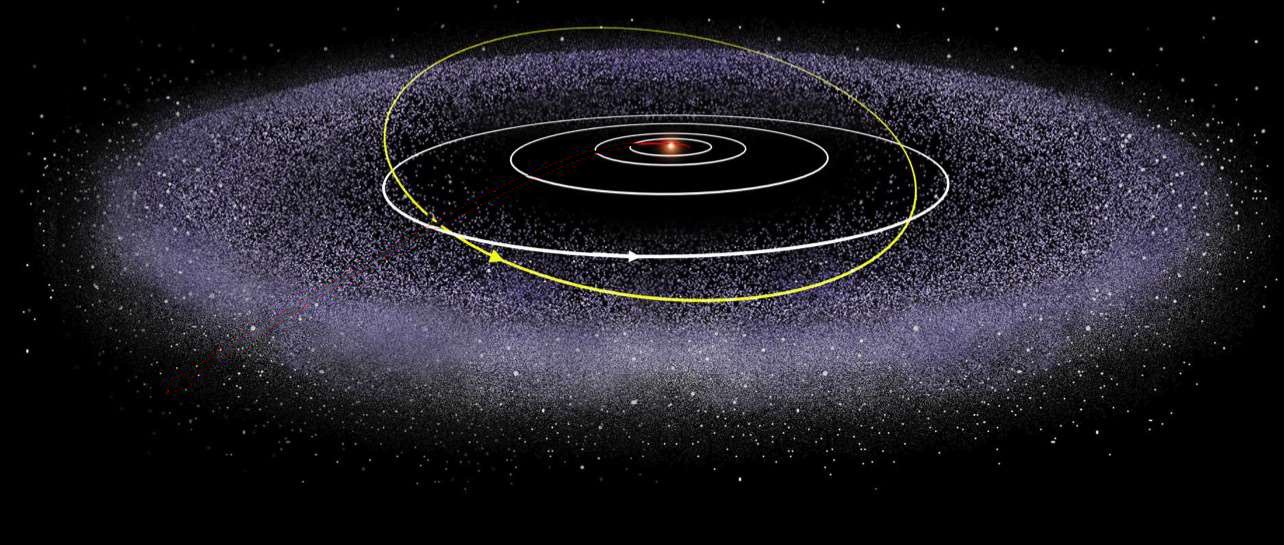Known since ancient times, comets are leftovers from the formation of the Solar System. Composed of a core a few kilometers in diameter, these revolve around the Sun within the "Kuiper belt". How to define a comet and where does this luminosity that characterizes it come from?
At the moment, comet C/2020 F3 NEOWISE is visible to the naked eye in the French sky. Discovered on March 27, 2020, the comet has already passed as close as possible to the Sun without breaking up. Its closest passage to Earth – 103 million km away distance – will be on July 23.
This visit is an opportunity to come back to the nature of comets. These have a core with a diameter of 1 to 20 km , rotating on itself with a rotation of 4 to 70 hours. It is made of rock but also of ice, gas and dust.
There are two types of comets. The comets short periods (between 3 and 15 years) revolve around the Sun in the Kuiper belt, an area of the Solar System located between 30 and 55 astronomical units from our planet (1 AU =Earth-Sun distance). Long Period Comets (between 50 and 5,000 years ago) form in the Oort Cloud, a large hypothetical spherical array of bodies located approximately between 20 and 30,000 AU to over 100,000 AU.

Residues from the formation of the Solar System, comets sometimes come out of the belt and head towards the Sun. This can happen as a result of gravitational disturbance . These comets then adopt an oval and very elongated orbit, one end of which passes close to the Sun.
As long as the comet is far from the Sun, it is not luminous. But everything changes when it gets closer to the Sun since the solar radiation that reaches it becomes more intense. However, its brilliance comes mainly from the reflection of sunlight , as is the case with the Moon.
However, intense solar radiation makes it possible to sublimate the ice, a gaseous exhaust dragging dust with it. It then becomes a question of an atmosphere, or rather the "hair" of the comet expanding (between 10,000 to 100,000 km).
There is also a dust tail whitish in color. This is visible beyond the hair between 1 and 10 million km in the opposite direction of the progression of the comet. It is also slightly curved in the plane of the orbit due to solar radiation pressure.
Finally, let's quote a second tail (plasma tail), this time bluish in color. The latter is observable in a direction aligned with the comet-Sun axis – like a shadow over a distance of between 10 and 100 million km.